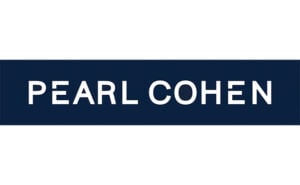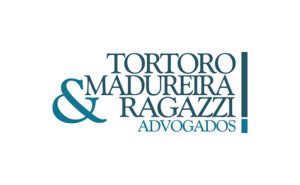
The 1990s felt like the Golden Age of employment law – employment protections were expanding rapidly (thanks to Europe), opportunities for pushing the boundaries and progressing in employment law seemed limitless; even the Prime Minister and his wife were employment lawyers. All of life was in employment law – power imbalances, relationship struggles, societal prejudices and biases, human ambition, vulnerability and frailties, and so much more. It was the most exciting area of law to go into at that time (and probably still is now), and everyone wanted to be an employment lawyer. I was lucky enough to have great mentors and sponsors who supported my progress and gave me international work that I loved, fantastic opportunities to learn, and, in time, the potential to travel. Employment law opened doors for me that I never expected and which, to this day, I genuinely appreciate.
Looking back on when you set up CM Murray in 2006, what were your key motivations for founding the firm?
I set up the firm in 2006, not long after recovering from aggressive breast cancer and undergoing a year of treatment. My perspective on life and what I wanted to do with it, changed as a result of that experience. I did not feel constrained by my previous firm, but I had always had an entrepreneurial side, and I felt that if I did not set up my own business after going through that, when was I ever going to do it? I wanted to create a law firm that specialised in employment and partnership law, which was flexible, internationally focused and gave us the opportunity to be creative. It was built around the values of trust, integrity and transparency. Clients especially liked the fact that our advice was always based in the real world, and that we helped them to make realistic and informed choices. Technical excellence, rigour and client empathy were very important to us. Those values and principles remain at the core of our firm and our ethos today.
What are your reflections on the firm’s growth and development since then?
At the time I set up the firm, there were only one or two City employment boutiques, and we wanted to be extra-special by being the first ‘Employment & Partnership’ boutique and set out our stall accordingly. Over the last 17 years we have focused on deepening our bench strength and reputation in those areas, and also expanding into specialist related areas, such as equity issues, corporate governance, professional regulation, and partnership structuring.
You specialise in corporate sexual harassment matters; how do you navigate what must be a sensitive, stressful and traumatic situation for your clients?
I got involved in my first sexual harassment investigation as a junior lawyer and it was clear even then that these were complex, challenging and frequently traumatic situations where the truth was not always obvious, but the outcome could feel like a forgone conclusion. Historically, there was a risk that if allegations were raised they would be swept under the carpet, and the harasser would get to stay, largely unaffected, while the complainant would be exited with an NDA and terms. Thankfully much has changed since those days, particularly over the last five or so years – especially with regulatory intervention. The awareness of law firms, who are themselves under strong regulatory expectation to investigate conduct matters properly, is having a cascading effect in terms of the way they advise their clients. Employers and firms are taking it more seriously but there is still much more to do.
As a team we have so much experience in sexual harassment matters, from such different perspectives – whether advising the complainant, the employer, the accusee or witnesses, or acting as the independent investigator in the process. It is important to understand that whatever the rights and wrongs of the situation, sexual harassment allegations can have a profoundly stressful and traumatic impact on the complainant and the accusee (and often the witnesses around them too). It can affect their mental and physical well-being, their reputation and career prospects, their family lives, and in the case of the accusee, potentially their liberty.
Although many clients in the senior executives space are male, it tends to be an area with a large number of female lawyers. Why do you think this is and what is your personal experience working in the practice?
I think there are a number of reasons for the high level of female lawyers in senior executive work. Employment law generally has always attracted more women lawyers than other areas; it feels more inclusive and accessible and perhaps less macho than some other areas of law in City firms. There were always many high-profile women lawyers in this space, so you could see that there was a route through for women. Senior executives specifically need not only technical rigour, a strong business focus, and a high level of accessibility – but also strong professional empathy – and there are many brilliant women – and men – lawyers in the senior executive space who are able to deliver that for them. When it comes to potential wrongdoing, accusees are entitled to advice, and for them to have a specialist adviser with a huge amount of expertise in the area can help them to understand where they may have gone wrong. These matters are always factually very complex, and rarely black and white. Your client may be someone who had four thousand people reporting to them and, because of what’s happened, they might now only have you. It is extremely interesting and tactical work, so why wouldn’t women want to do it?
What was your experience as a special adviser to a House of Commons committee?
It was the most extraordinary experience and possibly the best and most enjoyable one of my career. I had been asked to give expert evidence at the opening hearing of the Women & Equalities Select Committee’s Inquiry into Sexual Harassment at Work, and after being grilled by MPs on the committee, I was later invited to apply, alongside others, for the role of Special Adviser to the Committee in their Inquiry.
For around four months I worked intensively with the Committee and its internal team as their Specialist Adviser on the issues in their sexual harassment Inquiry and the recommendations of the Committee following it. These included support for the EHRC proposed introduction of a mandatory duty on employers to take steps to prevent sexual harassment, and the reinstatement of employer liability for third party harassment (both of which featured in the recent Worker Protection (Amendment of Equality Act 2010) Bill), and also requiring the regulators to take a more active role in holding regulated employers and individuals accountable for acts of sexual harassment (which encouraged the SRA and FCA to significantly step up their existing efforts in this area).
Attending the House of Commons every fortnight, sitting in the Select Committee hearings with MPs and witnesses debating sexual harassment at work and how the law and policy could be improved to prevent it, and doing so at a time when #MeToo was at the forefront of the news and of people’s daily conversations, was an incredible privilege and an experience I will remember for the rest of my life.
What advice would you give to someone who would like to get to where you have in the legal profession?
With any luck, a career of 40+ years in law may lie ahead of you. It’s a career that can be incredibly rewarding, intellectually stimulating, and allow you to be creative and innovative. It will also give you lifelong friends.
So to anyone starting out, I’d say find an aspect of employment law that you genuinely love, and where you find yourself happily immersed in your clients’ knotty problems and potential solutions. Law is a demanding profession, even with flexibility, and you really have to want to do it. So helping yourself by finding that corner of employment law that you love, and in which you can build a profile and practice, will carry you a long way. If you can, also have a second string to your bow – whether it’s employment plus regulation, immigration, pension or tax – so that you have a wider offering and perspective, and other areas to develop into in future.
Also, get yourself a mentor, or even a direct sponsor, who will champion your career, give you opportunities and open professional doors for you. Be open to the helpful nudges that they may from time to time give you to help you stay on track in your career.
What do you plan to do in the future?
I plan to get as much balance as possible between work and life with my family, and to enjoy both much as much as I can; you simply never know what lies around the corner for you. Running a firm can be a joyful experience and can also at times be intensely and relentlessly stressful in a way which can be hard to understand until you do it yourself. So I want to take time to enjoy this fabulous firm that we have built and to support and encourage my colleagues on their journey, opening doors for them, giving them chances to be creative, and empowering them to succeed, as others did for me.
What changes do you feel need to be made in City law?
Some positive progress has been made in City law firms, particularly around diversity, inclusion and social mobility initiatives. But there is still so much to be done to ensure meaningful and lasting change to the profession, rather than tokenistic and “one and done” approaches to appointments, pay and promotions.
As long as PEP and short-term profitability remain the key metric of City law firm success, and financial contribution is (explicitly or covertly) the main factor in assessing individual performance, underrepresented groups of society will continue to be marginalised and struggle to progress to the most senior and executive levels of law firms.
It requires senior members of firms to work together to remove unfair obstacles that lawyers from under-represented groups face, as well as encouraging their participation and ensuring they aren’t prevented from achieving their full potential. The objectives, performance metrics, remuneration and progression of senior members should reflect and drive that imperative, to help drive genuine and effective change in our profession.






